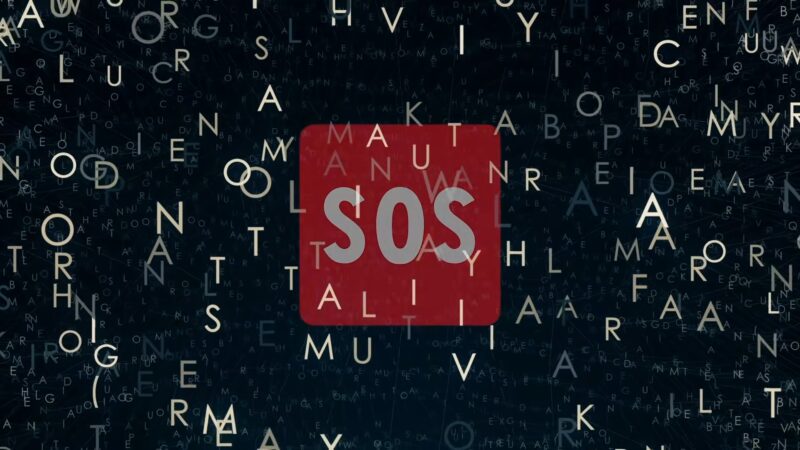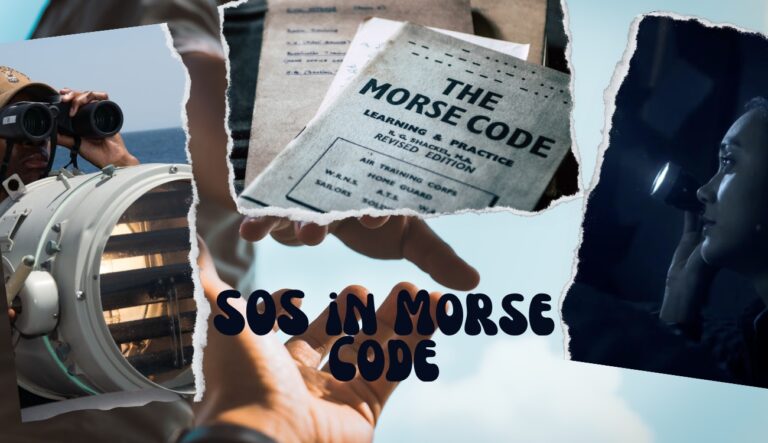Morse code, a method of transmitting text information as a series of on-off tones, lights, or clicks, has been around since the 19th century. It’s a fascinating system that has saved countless lives, particularly in emergency situations. One of the most well-known Morse code signals is the SOS distress signal. But how can you remember it easily?
This blog post will delve into the best ways to remember SOS in Morse code. In this comprehensive guide, we’ll explore the history of Morse code, the importance of the SOS signal, and effective techniques to remember it. Whether you’re a Morse code enthusiast, a survivalist, or just someone who loves learning new things, this post is for you. Let’s dive in!
Morse Code Explained

The Basics of Morse Code
Morse code was developed in the 1830s and 1840s by Samuel Morse and Alfred Vail to work with their new invention, the telegraph. This system of communication uses a series of dots and dashes to represent letters, numbers, punctuation, and special characters.
Each letter of the alphabet and number has a unique combination of dots (short signals) and dashes (long signals). For example, the letter ‘E’ is represented by a single dot, while the letter ‘T’ is represented by a single dash. Numbers are also represented in Morse code, with ‘1’ being dot dash and ‘5’ being five dots. This simple yet effective system has been used for over a century to convey messages across long distances.
The Role of Morse Code in History
Morse code played a crucial role in communication before the advent of modern technology. It was used extensively in maritime communication, military operations, and even in aviation. The Titanic, for instance, sent out distress signals in Morse code when it hit an iceberg in 1912.
Even in the digital age, Morse code still holds relevance. It’s used by amateur radio operators, and it’s also a valuable tool for people with disabilities to communicate. Moreover, learning Morse code can be a fun and rewarding hobby that exercises your mind and can even come in handy in survival situations.
The SOS Signal
The Origin and Meaning
The SOS signal, represented in Morse code as ‘…—…’, is universally recognized as a distress signal. Contrary to popular belief, it does not stand for any specific phrase such as “Save Our Souls” or “Save Our Ship.” It was chosen purely because of its simplicity and unmistakability in Morse code.
This signal was introduced by the German government in radio regulations effective April 1, 1905, and became the worldwide standard under the second International Radiotelegraphic Convention, which was signed in 1906 and became effective on July 1, 1908. Since then, it has been used to signal distress in dire situations.
The Importance of the SOS Signal
The SOS signal’s simplicity and universality make it an essential tool in emergency situations. It’s a call for help that can be understood internationally, regardless of language barriers. In Morse code, the SOS signal is distinctive and hard to misinterpret, making it an effective way to signal distress.
Moreover, the SOS signal can be communicated in multiple ways – not just audibly but also visually. It can be tapped out, flashed with light, or drawn, making it a versatile signal for various situations. Knowing the SOS signal can be a potential lifesaver, especially in survival situations.
Techniques to Remember SOS in Morse Code
Using Mnemonics

Mnemonics are a great way to remember information, and they can be particularly useful for remembering Morse code. For the SOS signal, you can use the mnemonic “Short, Short, Short – Long, Long, Long – Short, Short, Short.” This represents the three short signals (dots), three long signals (dashes), and three short signals (dots) that make up the SOS signal.
Another mnemonic you might find helpful is “Save Our Souls,” even though SOS doesn’t officially stand for this. The three words correspond to the three dots, three dashes, and three dots of the SOS signal. The ‘S’ in ‘Save’ and ‘Souls’ reminds you of the three short signals, and the ‘O’ in ‘Our’ reminds you of the three long signals.
Practice and Repetition
Like any new skill, practice makes perfect. Regularly practicing Morse code can help you remember the SOS signal. You can do this by tapping out the signal, writing it down, or using Morse code apps. Repetition is key to ingraining the signal in your memory.
Try setting aside a few minutes each day to practice. Start by focusing on the SOS signal, then gradually expand to other letters and numbers. Over time, you’ll find that the SOS signal and other Morse code signals become second nature.
Practical Applications of SOS in Morse Code

In Survival Situations
In survival situations, being able to signal for help can be a matter of life and death. If you’re lost or in danger and have no way to communicate, the SOS signal can be your lifeline. You can tap it out on a surface, flash it with a light, or even draw it in the sand or snow.
Remember, the SOS signal is internationally recognized, so even if you’re in a foreign country, the signal will be understood. It’s a simple, effective way to call for help when you need it most.
In Everyday Life
While you might not find yourself in a survival situation in your everyday life, knowing the SOS signal can still be useful. For example, if you’re a hiker or camper, knowing the SOS signal can add an extra layer of safety to your outdoor adventures.
Moreover, learning and practicing Morse code, starting with the SOS signal, can be a fun hobby. It’s a great way to challenge your mind, and it can be a unique skill to show off to your friends. Plus, you never know when it might come in handy!
While you’re exploring effective techniques to remember SOS in Morse code, you might also want to delve into the debate of whether it’s better to drive or fly when traveling short distances.
Final Words
Morse code, and particularly the SOS signal, is a fascinating and practical piece of history. It’s a simple yet effective system of communication that has saved countless lives over the years. By using mnemonics and regular practice, you can easily remember the SOS signal in Morse code.
Whether you’re interested in history, love learning new skills, or want to be prepared for any situation; Morse code is worth learning. Start with the SOS signal, and who knows where your Morse code journey will take you! Remember, as the saying goes, “Knowledge is power.”
In the case of Morse code and the SOS signal, knowledge could potentially be a lifesaver. So why not give it a try? You might find that Morse code is more than just dots and dashes – it’s a connection to the past, a tool for the present, and a potential lifesaver for the future.







